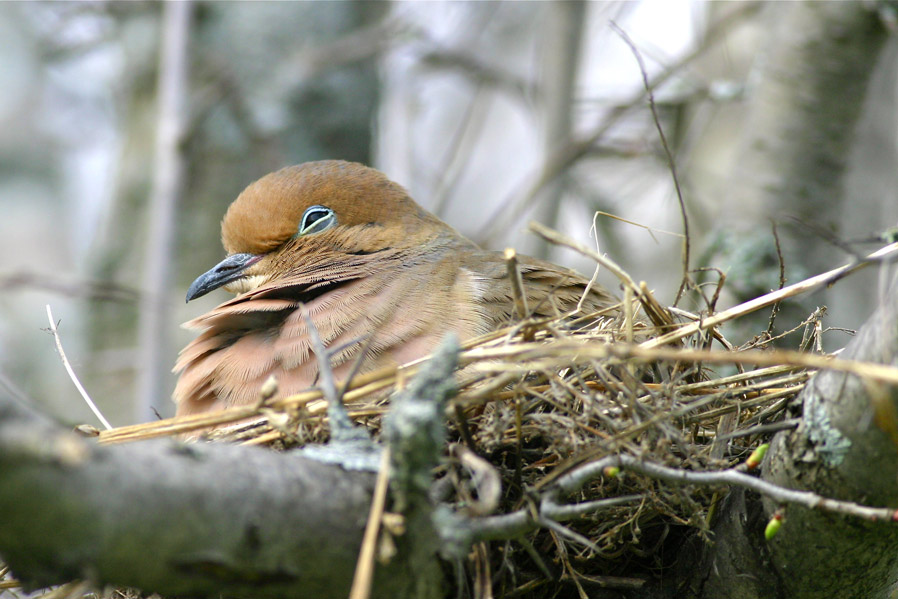Mourning dove (Zenaida macroura) dozing on his (?) nest, midafternoon, April 11, 2010 © BCP 2010
Lately, I’ve been wondering how birds tell time.
No, seriously. How do they know when to hand off incubating duties to the other spouse?
Yesterday afternoon at the beach, I noticed that our bay’s male swan, Tycho, was devotedly sitting on his nest (far from his old home in the inner bay) on property that I think belongs to the sewage treatment plant. I later saw his mate, Penny, swimming way out in the open lake to the south of the Ashbridge’s peninsula. Later again, I saw that after a visit to the inner bay to cadge some free human food), she made her way over to the nest to give Tycho a break. How did she know his turn at sitting was up, and that it was time for her to take over incubating duties?
I had exactly the same questions when I read about the reproductive behaviour of mourning doves before posting the above picture. My Smithsonian Handbook tells me that some research indicates mourning doves (Zenaida macroura) mate for life (like swans) — unless, of course, there is a death or infertility. And like the swan pair I watch, mourning doves take turns incubating the eggs in their nest. Wiki says that “mourning doves are devoted parents,” and rarely leave the nest unattended. The male incubates the eggs from morning to afternoon, females the rest of the day and at night.
How do they know when it’s time to switch? Of course, there are the usual cues animals use to tell time, like how long the days are, and amount of light. But how do they know on a cloudy or overcast day if it’s 2 p.m.or 5 p.m., and hence if it’s time to go and relieve the other parent.
So many questions. But that’s the magic of watching wild life in the city. Finally understanding that the animals around us know so much more than we give them credit for — like how to tell time.
© BCP 2010




no comments